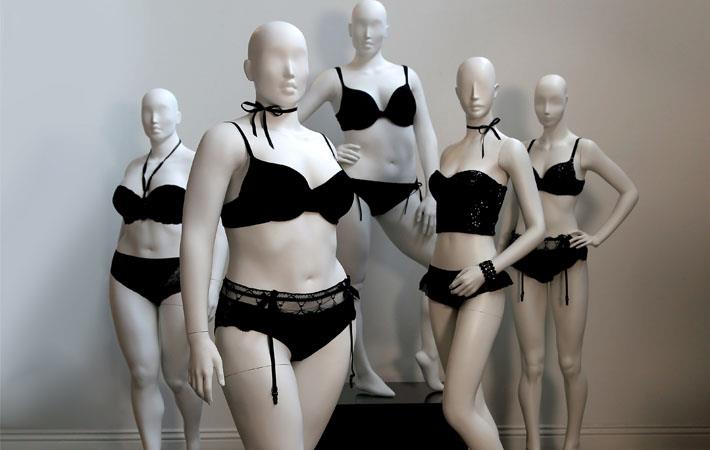With size inclusivity becoming a financial imperative – plus sizes make up for a $21 billion segment in the US - Greneker is focusing on creating mannequins for the inclusive market. The company says proper proportions are very important in the process and targeting only the waist, hips and bust measurements do not help in creating a realistic body.
A store, brand or line that makes size inclusivity fundamental to their products is on a path to empower women. Communicating this message can be effectively achieved through in-store display choices. Creating displays with lots of body-type diversity sends a message that they support, and more importantly understand what size inclusivity is really about; size is irrelevant and that beautiful, fun fashion can be had by all.With size inclusivity becoming a financial imperative – plus sizes make up for a $21 billion segment in the US - Greneker is focusing on creating mannequins for the inclusive market. The company says proper proportions are very important in the process and targeting only the waist, hips and bust measurements do not help in creating a realistic body.#
“When creating mannequins for the inclusive market, first and foremost it’s all about proper proportion. Larger models are unique, they are not simply expansions of a smaller display,” Greneker VP/creative director David Naranjo explains. “You can’t design a great mannequin of any size, but specifically larger sizes, by targeting only the waist, hips and bust measurements. There is a lot of body in-between. You have to get all of it right to create a realistic body.”
Naranjo says, “After that, you need to build in nuances that give the model attitude, emotion and style. That’s what the viewer connects with. These are subtle details but without them the mannequin and the viewer won’t relate.”
Retail has already taken a lead in catering to inclusivity. Numerous retailers, from boutiques like Eloquii and online disruptors like Universal Standard to large chains like Target, Walmart and Nordstrom are advancing this new sizing reality by expanding the breath of their size selections.
“Size Inclusivity, as it relates to retail, is the idea that straight and plus sizes are not independent of each other. It is the belief that plus sizes should no longer be relegated to their own stores or kept separate within the store. You can see the beginnings of this shift now, soon it will be standard practice that all sizes live together in the same space. No longer straight sizes and plus sizes, just sizes. That’s what size inclusivity is, embracing all body shapes and sizes. It is the message by retailers that all sizes are beautiful and by inference that all customers are equal,” says Steven Beckman, Greneker president and COO.
“It’s great that social awareness and retail consciousness are intersecting to create this new normal. We’ve been supporting retail with visual displays for over 80 years and are excited that we are in a position to apply our experience to help retail move forward in society. We see a better world for everyone as the outcome,” Beckman adds.
One of the great myths of fashion merchandising is that straight sizes (0-12) actually represent the general population. This is completely wrong. The average American woman is a size 16.
“We’ve known for a long time that there is larger market, and therefore the opportunity for greater sales, in fashion beyond sizes 0 - 12,” Beckman explains. “So called Plus Sizes are already a $21 billion segment. Fully embracing this segment is financially imperative to the growth of retail.” (SV)
Fibre2Fashion News Desk – India
